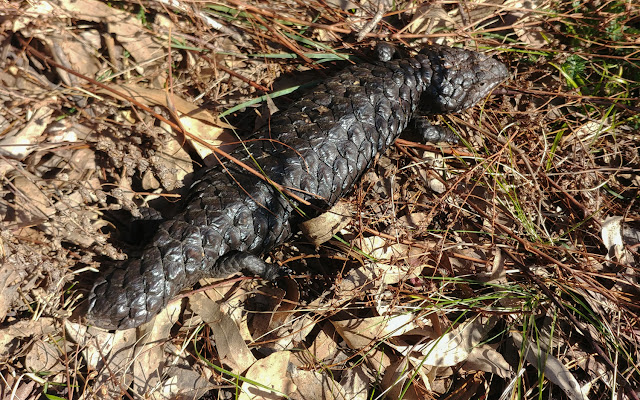Three Capes Track - Tasmania
A slideshow of photographs from a recent trip.
The lighthouse on Tasman Island is picked out by sunshine. The rocky pillars on the right form the Blade, a spectacular highpoint above the sound. The island is mostly bare of tall vegetation since its forest was cleared for firewood by the lighthouse keepers and eaten by their stocks of sheep, goats, cattle and pigs. The light was first lit in 1906 and automated in 1977. Shrubs and small trees are slowly reclaiming the land, and the island's breeding populations of Short-tailed Shearwaters and Fairy Prions are recovering after near eradication by feral cats, which were descendants of the lighthouse keepers pets.
This walk was over four days and is on well-laid paths all the way. Day one was short, beginning in dry woodland on the west coast of the peninsula and ending with a view over to Cape Raoul. On day two the path followed the clifftops and then cut inland through heaths full of wild flowers. Day three was spent walking out to Cape Pillar and back to the lodge, taking in the views across the Tasman Passge to Tasman Island. The fourth day was a long one out to Fortesque Bay, through the wetter east coast forest with lush ferns and mosses. Before heading down to Fortesque Bay, a detour leads out to Cape Hauy. That path ends abruptly right above the gap seperating the Candlestick from the mainland. The Candlestick is a very dramatic pillar and would be stunning enough if alone. However, its glory is stolen by the much smaller, singular dolerite pillar of the Totem Pole standing right in the narrowest section of the gap. This pillar is a popular rock climb (65m) although as can be seen, access to its base and return from the summit are difficult and weather must rebuff many long-awaited attempts.
The whole walk is so photogenic that I took too many shots to show here. So, I have collated some of these to give a sense of the walk's atmosphere as it meanders around the peninsula. Every turn in the path revealed another view, flower, tree or cliff. The whole mix was refreshing and I don't have any favourites. Others who have been there too, or plan to go will have their own favourite experiences.
This slideshow follows the route as described and is merely an illustaration of what to expect. For details of the walk check the Tasmanian Parks and Wildlife Service website: https://www.threecapestrack.com.au/
Watch out for the Tiger Snake, it's a black variety sunbathing in the grass.
Follow this link to follow my experience:


















